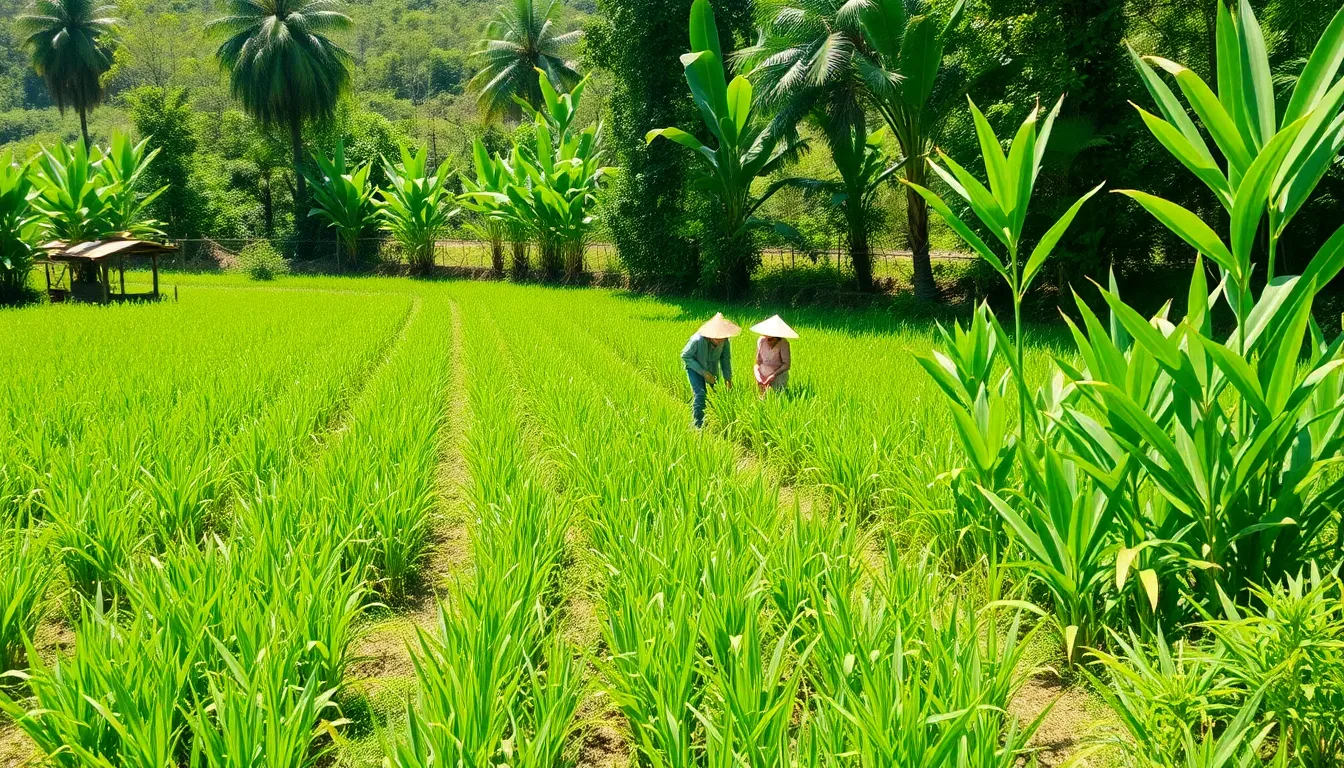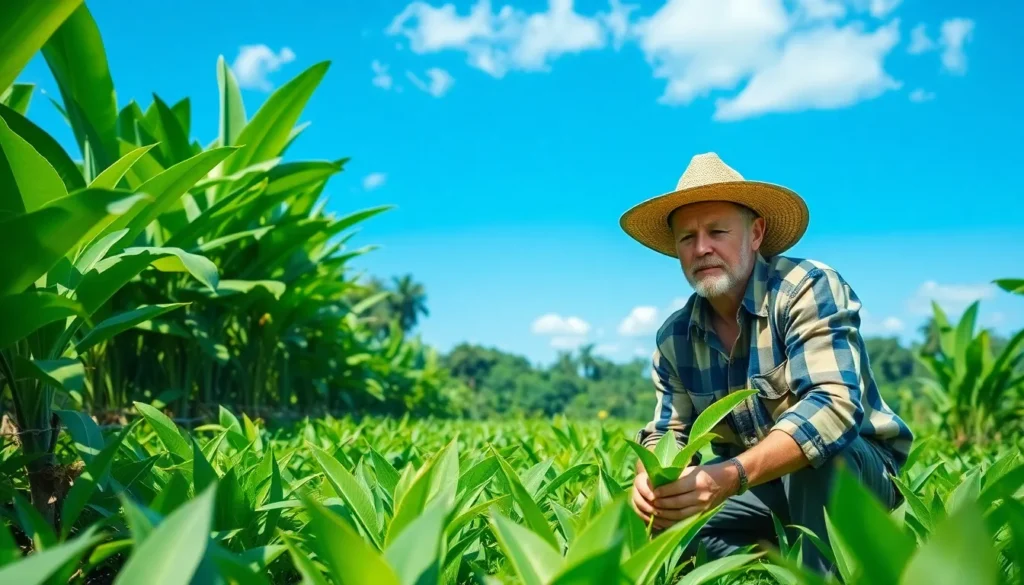When it comes to discovering hidden gems in the world of superfoods, kayudapu might just take the crown. This lesser-known powerhouse has sparked curiosity among health enthusiasts and nutritionists alike. But the burning question remains: is kayudapu rich in iron?
Table of Contents
ToggleOverview of Kayudapu
Kayudapu, often recognized for its potential health benefits, is a nutrient-dense food. This superfood features a unique nutritional profile that appeals to health-conscious individuals and nutritionists alike. Significant interest surrounds its mineral composition, especially iron content, as many seek natural sources to enhance their diets.
Identified sources show that kayudapu contains notable levels of iron. Research indicates that 100 grams of kayudapu can provide approximately 7.3 mg of iron, which contributes to daily dietary needs. Such iron content supports essential bodily functions, including oxygen transport and energy production.
Other nutrients also enhance the overall benefits of kayudapu. For example, it is a rich source of antioxidants, which help combat oxidative stress in the body. Furthermore, kayudapu contains vitamins A and C, both essential for immune system function and skin health.
Cultivated in a variety of regions, kayudapu thrives in diverse soils and climates. This adaptability contributes to its growing popularity in various dietary practices. As awareness of its nutritional properties spreads, the demand for kayudapu increases in health food markets.
Kayudapu is more than just a superfood; it’s a valuable source of iron and other essential nutrients. The exploration of its health benefits continues to captivate those interested in nutrition and wellness.
Geographical Significance

Kayudapu thrives in regions with fertile soil and a favorable climate, making its cultivation widespread. Its adaptability allows growth in areas ranging from tropical to subtropical climates, contributing to its rich nutritional profile.
Location and Terrain
Various locations host kayudapu, with tropical and subtropical regions being the most favorable. Specific areas include parts of Southeast Asia and Central America, where the soil remains rich in organic matter. Abundant sunlight enhances growth while protecting the plant from waterlogged conditions. Numerous farmers cultivate kayudapu in fields that provide optimal drainage, ensuring healthy development.
Mineral Composition
The mineral composition of kayudapu includes substantial amounts of iron, which plays a critical role in human health. An analysis indicates that 100 grams contain approximately 7.3 mg of iron, supporting functions like oxygen transport. In addition to iron, kayudapu boasts other vital minerals such as calcium, magnesium, and potassium. These minerals contribute to various bodily functions while enhancing the superfood’s overall nutritional value.
Iron Richness in Kayudapu
Kayudapu is recognized for its notable iron content, essential for maintaining health. Research indicates that geological studies confirm significant iron deposits in regions where kayudapu thrives.
Geological Studies
Geological studies reveal that kayudapu flourishes in soils rich in mineral content. Analysts found that the iron concentration averages around 7.3 mg per 100 grams of kayudapu. This concentration supports its classification as a valuable source of iron. Soil samples from tropical regions show enhanced levels of iron, promoting kayudapu’s growth. Interesting findings suggest that the unique geological characteristics of these areas contribute to kayudapu’s impressive nutritional profile.
Comparison with Other Regions
When comparing kayudapu’s iron content to other regions, its advantages become more apparent. Countries in Southeast Asia exhibit a higher concentration of iron in kayudapu compared to similar foods. In contrast, iron levels in certain European foods often fall short of what kayudapu offers. Nutritional studies consistently show that foods from regions like Central America also mirror this richness in iron. Readers can appreciate the superior iron attribute of kayudapu, especially when compared to other vegetables, solidifying its role as a prominent health food option.
Economic Implications
Kayudapu’s iron-rich profile carries significant economic implications for local communities engaged in its cultivation and distribution.
Impact on Local Industries
Local industries benefit from increased demand for kayudapu due to its nutritional advantages. Farmers have the opportunity to expand their markets, leading to higher incomes. Nutrient-rich crops like kayudapu attract both local and international health-conscious consumers. As awareness grows, processing industries emerge to create value-added products, such as supplements and snacks. Retailers also capitalize on the burgeoning health food trend, leading to a vibrant marketplace. The local economy strengthens as income levels rise, providing farmers and workers with essential resources to improve their quality of life.
Future Prospects
Future prospects for kayudapu appear promising, especially concerning its iron content. Researchers continue to explore innovative cultivation techniques to enhance yields further. Global trends favoring superfoods suggest a steady rise in consumer interest, which bodes well for local economies. As more studies confirm kayudapu’s health benefits, demand may surge even higher. Sustainable farming practices could position local farmers as leaders in the superfood market. This unique crop represents an opportunity to improve economic stability while promoting health benefits on a larger scale.
Kayudapu stands out as a remarkable superfood rich in iron and essential nutrients. Its impressive iron content not only supports vital bodily functions but also enhances its appeal among health-conscious consumers. The growing interest in kayudapu reflects a broader trend towards nutrient-dense foods that promote overall wellness.
As cultivation practices improve and awareness spreads, kayudapu’s potential to benefit local economies and health markets continues to expand. This superfood’s unique nutritional profile positions it as a valuable addition to diets, making it a worthy consideration for those seeking to boost their iron intake and overall health.



